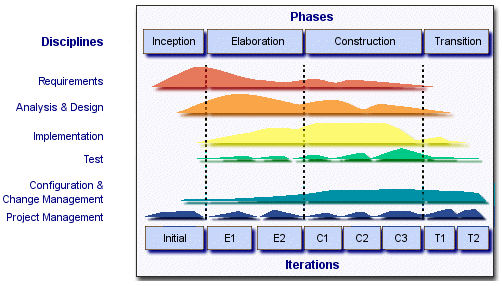![]() Overview
Overview
Unified Process for EDUcation: Overview
Introduction
|

Click on any region on the picture to get more information |
UPEDU is a software engineering process. It
provides a disciplined approach to assigning tasks and responsibilities within a
development organization. Its goal is to ensure the production of
high-quality software that meets the needs of its end users within a predictable
schedule and budget. The figure at the top shows the overall architecture of
UPEDU.
UPEDU has two dimensions:
- the horizontal axis represents time and shows the life-cycle aspects of the process as it unfolds
- the vertical axis represents core process workflows, which group activities logically by nature.
The first dimension represents the dynamic aspect of the process as it is
enacted, and it is expressed in terms of phases, iterations, and milestones.
[ See Lifecycle for more information ].
The second dimension represents the static aspect of the process: how it is
described in terms of process components, activities, workflows, artifacts, and
roles.
[ See Concepts and Guidelines for more information ].
The graph shows how the emphasis varies over time. For example, in early iterations, we spend more time on requirements, and in later iterations we spend more time on implementation.
Finally, UPEDU has a specific Case-Study derived from the Rational Unified Process 2000 along with available deliverables/artifacts.
[ Find out more about the UPEDU Case-Study ].
Manual References 
You can also refer to the manual - Learning Software Engineering with the UPEDU. In each Introduction section of each core disciplines, you will find the related manual chapters. See References - Software Engineering with the UPEDU for chapters details.